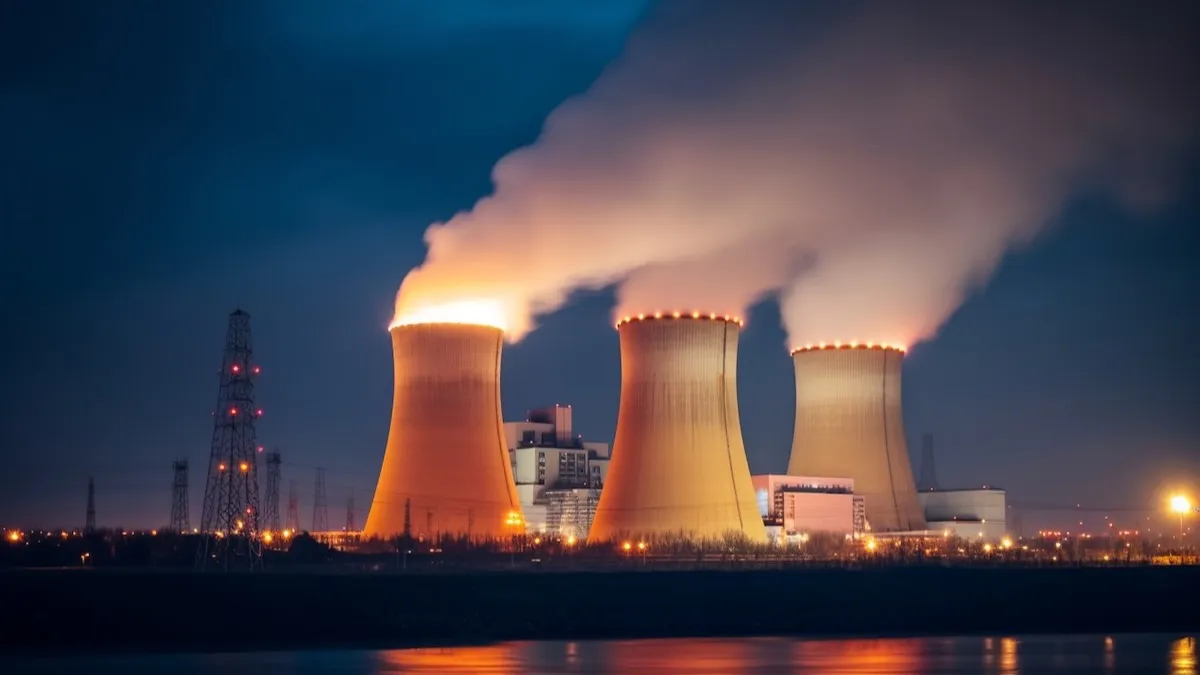- Courses
- GS Full Course 1 Year
- GS Full Course 2 Year
- GS Full Course 3 Year
- GS Full Course Till Selection
- Answer Alpha: Mains 2025 Mentorship
- MEP (Mains Enrichment Programme) Data, Facts
- Essay Target – 150+ Marks
- Online Program
- GS Recorded Course
- NCERT- First Ladder
- Polity
- Geography
- Economy
- Ancient, Medieval and Art & Culture AMAC
- Modern India, Post Independence & World History
- Environment
- Governance
- Science & Technology
- International Relations and Internal Security
- Disaster Management
- Ethics
- Current Affairs
- Indian Society and Social Issue
- CSAT
- 5 LAYERED ARJUNA Mentorship
- Public Administration Optional
- ABOUT US
- OUR TOPPERS
- TEST SERIES
- FREE STUDY MATERIAL
- VIDEOS
- CONTACT US
Plan to Amend Nuclear Liability Law May Encourage American and French Firms
Plan to Amend Nuclear Liability Law May Encourage American and French Firms

- India is planning to amend key nuclear energy laws, the Civil Liability for Nuclear Damage Act (CLNDA), 2010, and the Atomic Energy Act, 1962, to address legal challenges and promote foreign investment.
- These changes were announced in the 2025 Budget, ahead of PM Modi’s visits to Washington and Paris in February 2025.
- The aim is to attract American and French companies to invest in India’s nuclear energy sector.
Comparison of Nuclear Liability Law Before and Proposed Amendments:
|
Aspect |
Civil Liability for Nuclear Damage Act, 2010 & Atomic Energy Act, 1962 |
Proposed Changes to CLNDA & Atomic Energy Act, 1962 |
|
|
Operator Liability |
Under CLNDA, 2010, operators were strictly liable for nuclear accidents, even if the incident wasn’t their fault. |
Operators will remain responsible for accidents, but liability may be reduced or shared with suppliers under the revised CLNDA. |
|
|
Supplier Liability |
CLNDA, 2010 introduced supplier liability, making suppliers responsible for damages caused by defective equipment. |
Supplier liability will be separated from operator liability, reducing suppliers’ financial risks under the revised CLNDA. |
|
|
Financial Security |
CLNDA, 2010 required operators to set aside sufficient funds for potential damages, with government stepping in if costs exceeded limits. |
No significant change in financial security provisions, but revisions to liability rules reduce overall financial burden on operators under CLNDA. |
|
|
Private Sector Participation |
Atomic Energy Act, 1962 restricted private and foreign companies from owning or operating nuclear plants in India. And it maintained public sector monopoly in the nuclear industry. |
Amendment to the Atomic Energy Act will allow private and foreign companies to own and operate nuclear plants in India. PPPs are encouraged with joint ventures between NPCIL (Nuclear Power Corporation of India) and foreign companies under the amended Atomic Energy Act. |
|
|
International Standards Alignment |
CLNDA, 2010 and Atomic Energy Act, 1962 were not fully aligned with international standards like the International Convention for Supplementary Compensation (CSC). |
Amendments to CLNDA will align India’s laws with international standards, particularly the CSC (International Convention for Supplementary Compensation). |
|
Background : Bhopal Tragedy and Its Impact on Nuclear Liability Law
- The 1984 Bhopal gas tragedy, where a gas leak from the Union Carbide plant killed thousands, influenced India's nuclear liability laws.
- It highlighted the need for strict accountability for foreign companies in the case of industrial accidents.
2012 Amendment to CLNDA
- In response to Bhopal, the government added the supplier liability clause, holding suppliers accountable for defective equipment.
- This led to concerns among foreign companies like Westinghouse and EDF who feared being financially liable for accidents tied to their supplied equipment, delaying projects.
Challenges Faced by American and French Firms
- Westinghouse and EDF raised concerns about the financial risks of the supplier liability clause, leading to the delay of several major projects.
- Kovvada (Andhra Pradesh): Westinghouse signed a deal in 2012 to build six AP1000 reactors, but the project has been delayed for over 15 years.
- Jaitapur (Maharashtra): EDF signed a deal in 2009 to build six EPR1650 reactors, but delays persist.
- Current Nuclear Power Capacity: India’s current nuclear capacity stands at 6,780 MW, with 22 reactors in operation.
- Foreign Operator: Rosatom (Russia) is the only foreign operator in India’s nuclear sector.
Key Budget Announcement (February 1, 2025)
- ₹20,000 crore allocated for developing five Small Modular Reactors (SMRs) by 2033.
- Nuclear Energy Target: India aims to reach 100 GW of nuclear power capacity by 2047, helping the country meet carbon emission reduction targets.
Impact on American and French Firms
- Encouraging Investment: Easing liability rules is expected to attract American and French companies to invest in India’s nuclear energy market.
- Faster Project Execution: The reduction in legal risks could speed up the construction of projects like those in Kovvada and Jaitapur, which have faced delays for 15 years.
- Advanced Nuclear Technologies: Partnerships with foreign firms will bring Small Modular Reactors (SMRs) and other advanced technologies to India, supporting clean energy goals.
What Are Small Modular Reactors (SMRs)?
|
About Nuclear Power Corporation of India Limited (NPCIL) – Key Points
|
|
Also Read |
|
UPSC Foundation Course |
|
| UPSC Monthly Magazine | CSAT Foundation Course |



